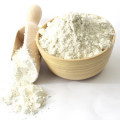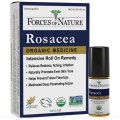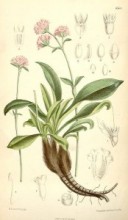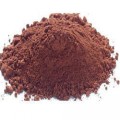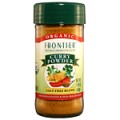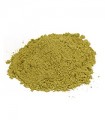 Loading... Please wait...
Loading... Please wait...- Home
- About Us
- Shipping, Returns & FAQ's
- Contact Us
-
For Your Information
- Canadian Customers Have a Choice if Shipping Via UPS
- Aura Cacia Homemade Aromatherapy Recipes
- Bella Nella Altered Art & Paper Crafts Blog
- Forms of Herbal Preparations
- Laundry Tips To Conserve Energy Blog from The Laundress
- The Story of Frontier Natural Products Co-Op
- Sovereign Silver Hydrosol and Aloe Protocol Stops Downward Spiral of Gut Dysbiosis
- Disclaimers
- Recommended Links
- RSS/Recent News
- The Story of Typhoon Housewares
- Reviews/Testimonials
- Raw Ingredients for Mfg
- Home
- Supplements
- Sleep/Relaxant
- Jatamansi (Nardostachys; Indian Valerian) Powder Wildcrafted Bulk
Jatamansi (Nardostachys; Indian Valerian) Powder Wildcrafted Bulk
Product Description
According to Ayurveda it is named as Jatamansi which is called as Musk root in English. Valerian is useful as a natural relaxant. Effective for quieting an overactive mind, valerian has played the role of a natural sedative for millennia. Valerian species have been valued for their calming influence by healers in Asia, Europe, and North America. Dozens of modern studies have confirmed that this strong-smelling herb has measurable tranquilizing properties with minimal side effects.
The Science of Valerian
Valerian has an established history of safety and efficacy. A valuable antispasmodic, digestive stimulant, diuretic, deals nervous disorders, alleviates flatulence and is also a deobstruent. It is also useful in other ailments in which the use of Jatamansi medications have been helpful are epilepsy, gastric disorders, heart palpitations, jaundice, respiratory diseases, skin diseases, typhoid and seminal debility. It is one of the most popular herbs in Europe, with over 100 million units prescribed in Germany between 1974 and 1993. Studies from around the world have demonstrated that valerian taken before bedtime can improve the quality of rest a person receives. A report from Sweden demonstrated that valerian was substantially more effective that a placebo in enhancing sleep without side effects. Other studies have shown that valerian reduces the number of times it takes to fall asleep, reduces the number of times a person awakens during the night, improves the quality of rest gained during the night, and produces minimal or no drowsiness in the morning.
Studies have suggested that valerian may have stress-neutralizing effects that extend beyond its capacity to promote sound sleep. There are reports that it may diminish the risk of stress, ulcers and reduce spasms in the digestive tract. Valerian may also have lipid-lowering effects, with one study demonstrating that extracts of Indian valerian lower total cholesterol levels and raise the HDL (good) component. Finally, extracts of valerian have also been shown to have antibiotic activity against a variety of molds.
Practical Uses For Valerian
Valerian is useful as a natural relaxant. Musk Roots is popular herb in Ayurveda to battle against the effects of day-by-day stress. It attributes to heighten the body’s natural ability to sleep well.
Although it has not been shown to have any serious long-term side effects, we do not encourage the chronic use of valerian for the treatment of insomnia or anxiety. If you are consistently having trouble sleeping, look to the underlying cause. Are you stressed at work? Are there relationship issues that need to be addressed? Valerian is a valuable botanical gift, but should not be taught of as a substitute for tranquilizing drugs, taken chronically to cope with unresolved emotional imbalances in your life.
Valerian can be helpful in the occasional treatment of sleep difficulties, muscle tension, and mild functional digestive imbalances. As a natural bridge across stressful life challenges, it is a gentle stress-relieving ally.
Ayurveda and Valerian
Ayurveda recognizes two different medicinal plants in the valerian family: tagara and jatamansi. Tagara is the closest to Valeriana officinalis, which is the plant most widely used in Western herbal formulas. Jatamansi sometimes goes by the Latin name Valeriana jatamansi and is also called Nardostachys jatamansi. It is said to be slightly less sedating that tagara, but this has not been confirmed scientifically.
Both bitter, sweet pungent, and astringent, although tagara is warming in potency whereas jatamansi is somewhat cooling. Tagara is better for Vata and Kapha, while jatamansi has particular value in pacifying the overheated ruminating mind that excessive Pitta can generate.
The plant has a rich history of medicinal use and has been valued for centuries in Ayurvedic (Indian) and Unani (ancient Greco-Arab) systems of medicine. The rhizomes of the plant are used in the Ayurvedic system of medicine as a bitter tonic, stimulant, antispasmodic, and to treat hysteria, convulsions, and epilepsy. The root has been medically used to treat insomnia and blood, circulatory, and mental disorders. Some preparations of the plant have been used as a heptotonic, cardiotonic, analgesic, and diuretic in the Unani system of medicine.
Preparations: Mansadi-kwath, Rakshoghna-ghrita, Sar-vousadhi-snan, Dasanga-lep, Laghu-visgarbha-taila, Pippalayasav and Becamin.
Dosage: 1-2 tsp two times a day after meal or as directed by your practitioner.
Avoid use during pregnancy and lactation because of the lack of clinical studies.
Contrary to popular belief, all herbs from India are not irradiated, including ours. Because of our high quality packing techniques and cleaning procedures, there is not need for the authorities to irradiate our herbs. Then they are subjected to a series of in-depth quality control tests to ensure purity, potency and cleanliness. Quality checks continue throughout the various stages of manufacturing, as well as at the completion of production. Extensive Bacteria, Mold and Yeast, E. coli and Salmonella testin are conducted. Also herb quality is tested using Organoleptic ID testing, Microscopy, & Thin Layer Chromatography (TLC). Foreign materials are tested using high temperature ash testing. We do not hesitate to reject inferior herbs, thus ensuring consistent high quality.
Botanical Name: Nardostachys jatamansi; grandiflora jatamansi DC. Family: Valerianaceae
Origin: India
Notes: Kosher. Non-irradiated. aka Sambul lateeb, Sumbul-ut-teeb, balchar, musk root, Balchharh, Mansi, Machhi, Spikenard
Reference
naturalhealthcure.org
drugs.com
Read More About It
Forms of Herbal Preparations
Complete Book of Ayurvedic Home Remedies by Vasant Lad
The Quick & Easy Ayurvedic Cookbook by Eileen Keavy Smith
The Herbal Medicine Chest by Sujata Bristow
The Book Of Herbs by Dawn Titmus (Editor), Thunder Bay Press
Herbal Prescriptions for Health and Healing: Your Everyday Guide to Using Herbs Safely and Effectively by Donald J. Brown, Don Brown
Specifications may change without notice.
*FDA Disclaimer
You Recently Viewed...
Currency Converter
Choose a currency below to display product prices in the selected currency.




